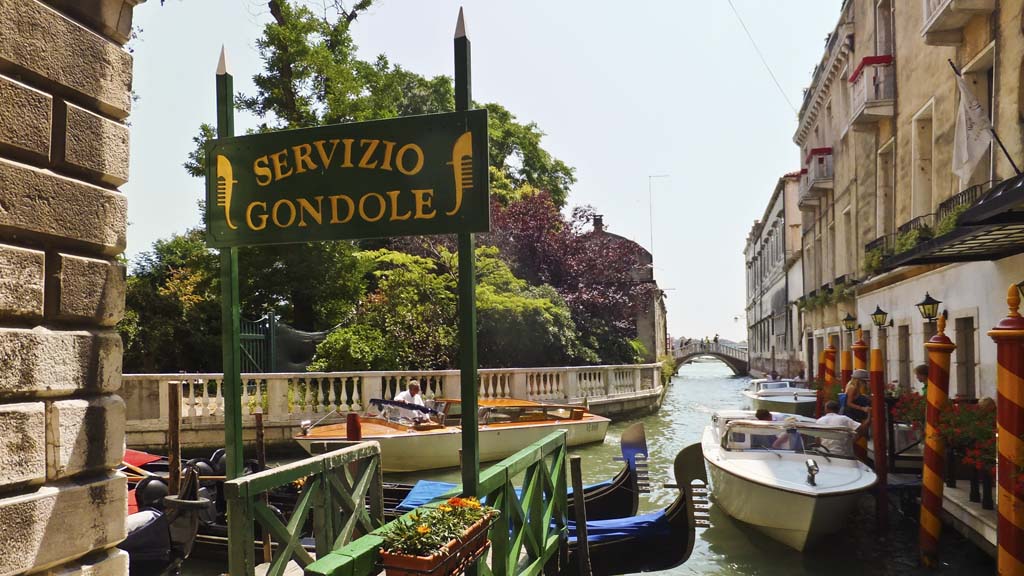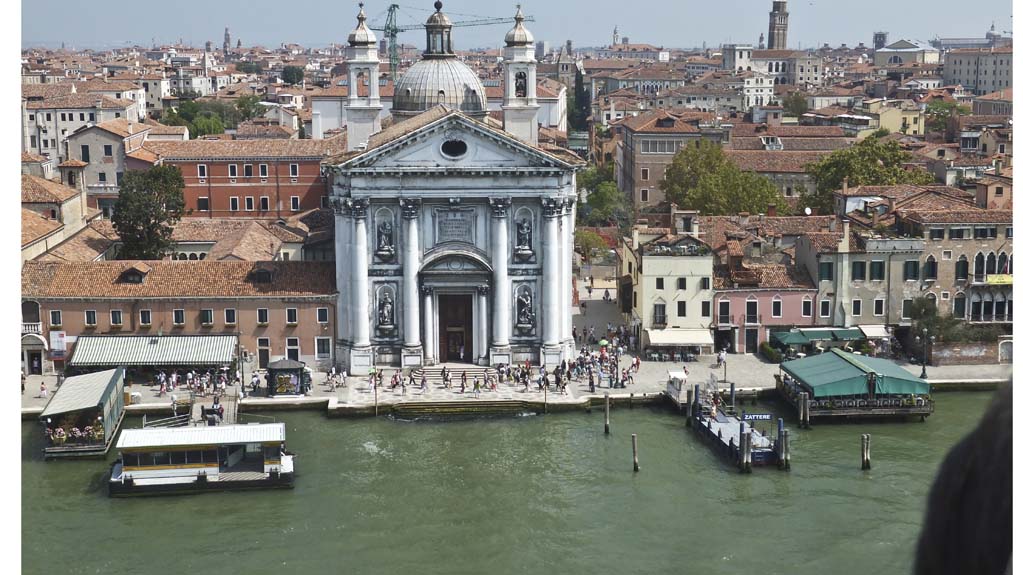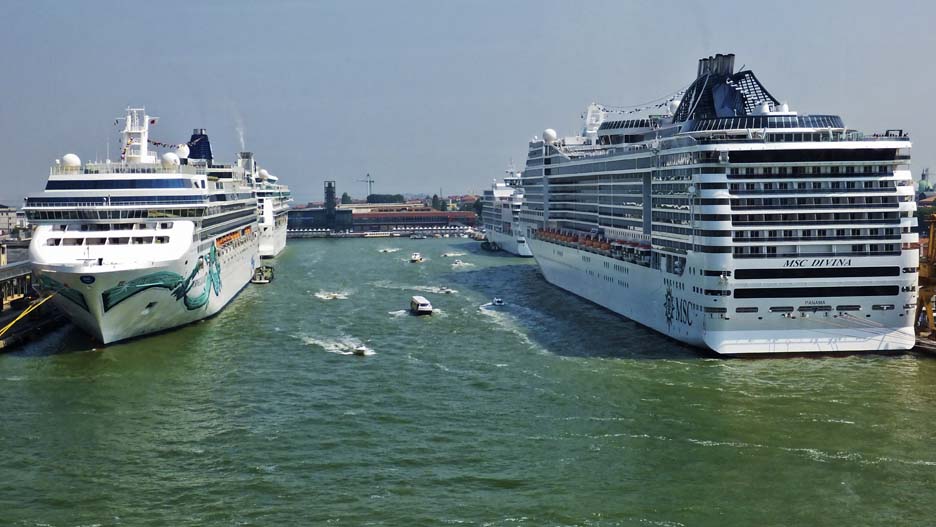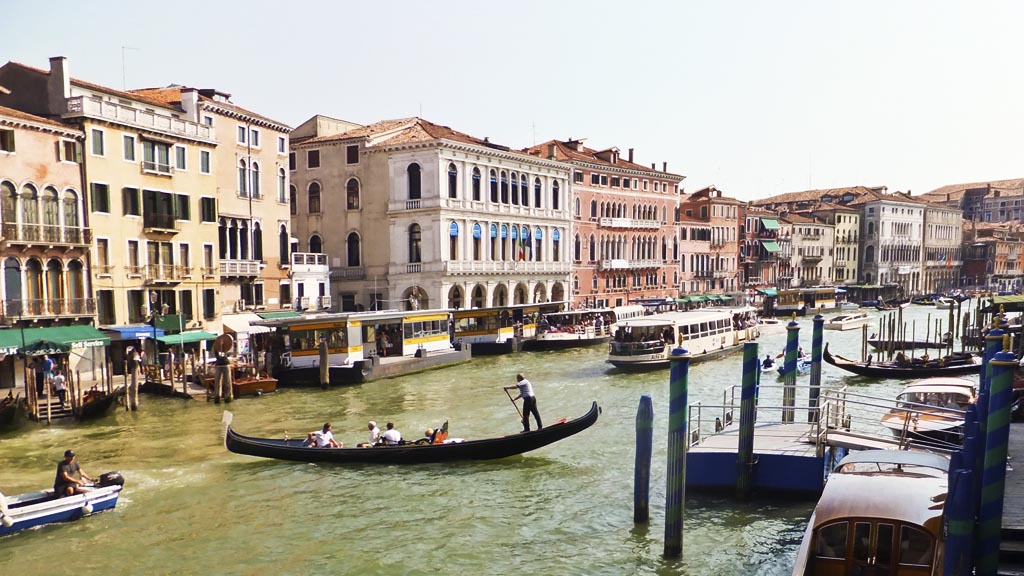
The breathtaking beauty of Venice is both a blessing and its curse.
No other place on Earth has matched the feat of keeping its shape since the high Renaissance. It’s evaded not only urban renewal and the invasion of modern architecture but the global bane of the automobile.
That makes La Serenissima a must see on anyone’s travel life list. And there’s where reality is at odds with the romantic notion that Venice should be the domain solely of the Venetians.

There’s been a froth stirred up in the past few weeks about the sheer numbers of tourists who visit Venice and what that can mean to the orderly flow of life in the city of canals.
The No Grandi Navi movement protesting big cruise ships passing by the fragile city has grown into a protest against a a broad spectrum of visitors. It’s part of a growing protest movement across Europe that “overtourism” isn’t being sufficiently addressed by officials.
The reality: Avoiding collisions is job in Venice–Photograph by Wallace Immen
The knee-jerk reaction from the activist groups is that overwhelming tourist demand is the problem. Without all of those people arriving all the time, Venice would be able to operate as serenely as it has since the days of the Doges.
But ships are getting the bulk of the flak. I was on board the Carnival Sunshine as it sailed in to Venice on a cruise in late July, 2013. “Local observers” on shore that day reported to the world press that the ship made an unscheduled “salute” that came dangerously close to shore near iconic Piazza San Marco. The story certainly made salacious reading in weekend British tabloids, where it was accompanied by a photo taken from shore that appeared to show a local taxi boat supposedly being “squeezed” against a dock as the cruise ship passed within meters of shore.
It was a lesson to me in optical foreshortening how you can be fooled by a photograph.

I was videotaping the whole sail in on deck that day and if anybody cares to ask, I can offer proof that we were actually far off shore as we passed San Marco and the walkway along Spirito Santo where the photo was taken—and that there was ample room for a myriad of other boats that passed us. Sailed on its planned route which is the one all cruise ships arriving and leaving Venice take. There was no choice because the city requires a local pilot to be on board supervising the route of the ship and tug boats are tethered to the front and rear of ships to keep them on course and at a slow speed that minimizes wake.
However, the story of a supposedly rogue ship made great propaganda for the local lobby trying to ban “Grandi Navi” –big ships– from calling on Venice. Their argument is that Venice doesn’t need the thousands of tourists that ever larger cruise ships bring daily to the cruise piers– that are located in an industrial zone outside the historic areas the city.
Okay. Let’s examine their argument. The five large cruise ships that were in port that day included a couple that carried close to 4,000 passengers each.
Consider the option. The demand is still going to be there from tourists all over the world. They’re going to want to come and where would you put the up to 10,000 passengers a day who arrive on cruise ships that act as floating hotels while they visit the city? Imagine plans for high rise hotel towers surrounding San Marco. That would really raise a protest.

I’ve been arguing for a decade that there should be some sort of control on the number of people who can visit La Serenissima daily. Perhaps a head tax might make it seem more of a privilege to be there and at the same time create a fund to aid preservation efforts. But banning visitors outright would do irreparable harm to the economy that is almost completely dependent on tourism.
Yes, I’ll agree that Venice is overcrowded. I’m sure British poets John Ruskin and Lord Byron of the romantic age thought so too. Once you’ve seen Venice, one visit is not enough either. You want to re-experience it and I’m as guilty of that as anyone.
But is Venice dangerously over-crowded? I’ll still argue no. The city was built to be a welcoming moving feast for visitors. The operators of the gondolas and water taxis who ply their aquatic trades daily are uniquely trained and skilled. I’ve yet to see a gondolier slip and fall despite the dozens of boats that may jostle around them in tight quarters.
The recent tragic gondola accident was fortunately the first of its kind for years. I’ve watched speed boats wind their way between dozens of gondolas packed in narrow side canals and marvelled at the ballet of huge vaporettos making their criss-crossing way to docks along the Grand Canal while surrounded on all sides by traffic big and small.
And fortunately, mornings and evenings and off season in Venice are still serene.
It’s Venice. It’s the same city that traders and visitors from the known world sought out for centuries, that the romantics extolled and that guide books rave about as a five-star must-do attraction. And it belongs to the world.
Appreciate it during your time there. And leave it as serene as you found it.










1 Trackback / Pingback
Comments are closed.